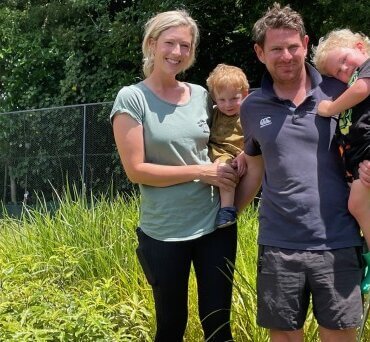
Alice Trevelyan and Dave Swney
Dairy farmers Dave Swney and Alice Trevelyan turned to growing native plants to earn a secondary income to complement their farm.
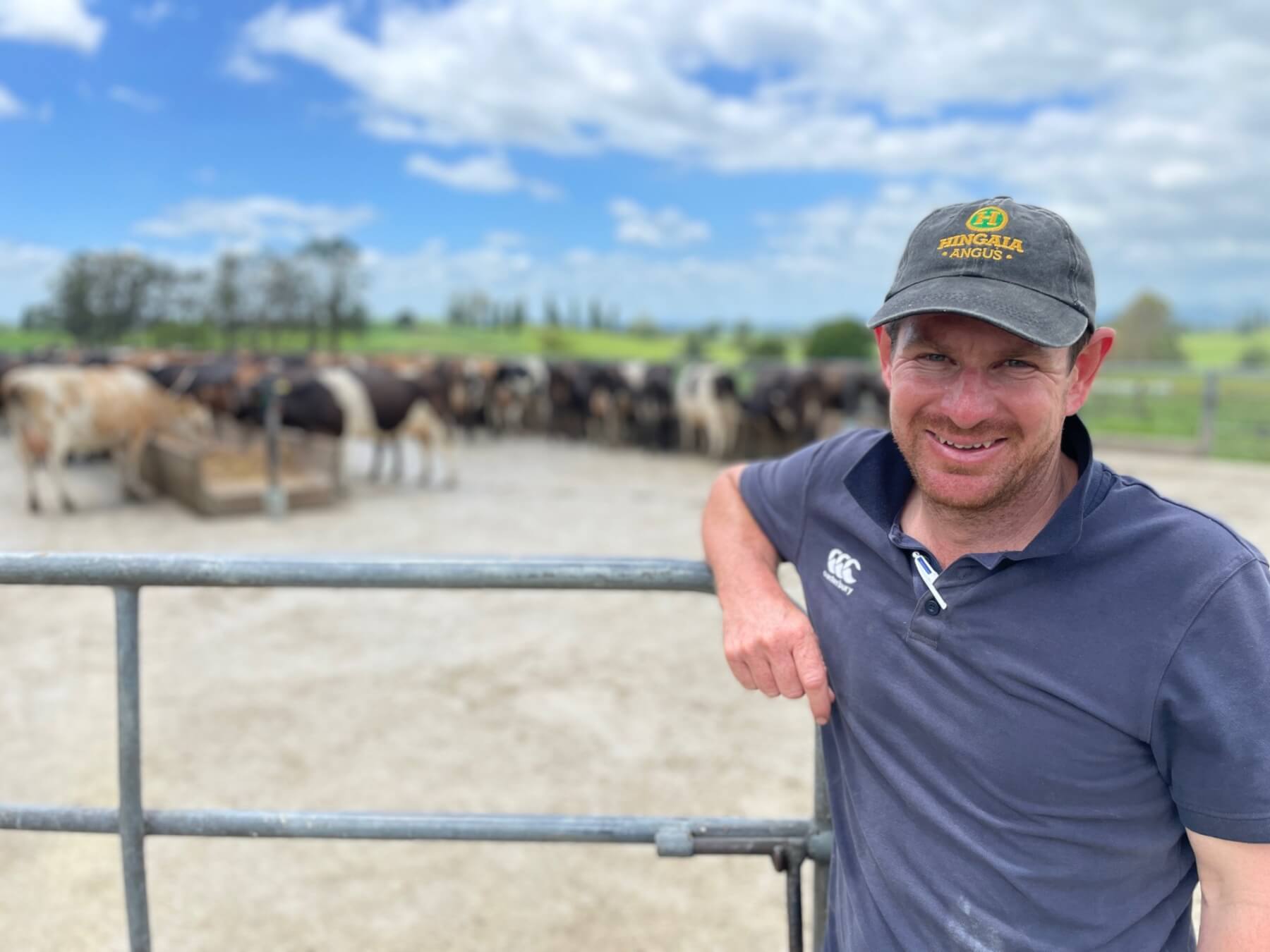
Dairy farmer Dave Swney’s herd enjoys a feed ahead of afternoon milking.
Trevelyan drew on her experience as a Waikato Regional Council catchment management officer four seasons ago to turn the tennis court on the family farm between Te Awamutu and Ōtorohanga into a native plant nursery.
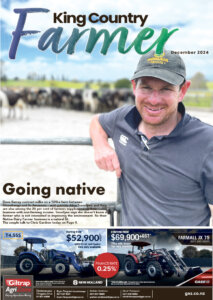
King Country Farmer December 2024
The enterprise puts the couple among 26 per cent of farmers a recent survey revealed were supplementing their farming business with non-farming income.
The Native Dairy Farmer, as they called their add on business, is in its fourth season growing around 30,000 plants per year, predominantly for use in riparian plantings schemes on farms.
“It was getting harder and harder to be able to run your own farm,” Sweny, a former DairyNZ field officer, said.
“We knew we had to think outside of the box a little bit. If we could do something that was not dairy farming it was a win,” he added.
“When we started the Native Dairy Farmer things were tough financially so any extra dollar of income, we could generate through this other revenue stream was invaluable,” Trevelyan said.
“Like any new business it has been tough to get started and create a customer base, however now we have a couple of years under our belt we have developed some really cool relationships with our customers.”
“The pressure on the Native Dairy Farmer to produce a profit has been a true reality.”
The native nursery, with its irrigation system, allowed Trevelyan to leave her council job and mother two boys – Walter, aged two, and Rex, aged one.
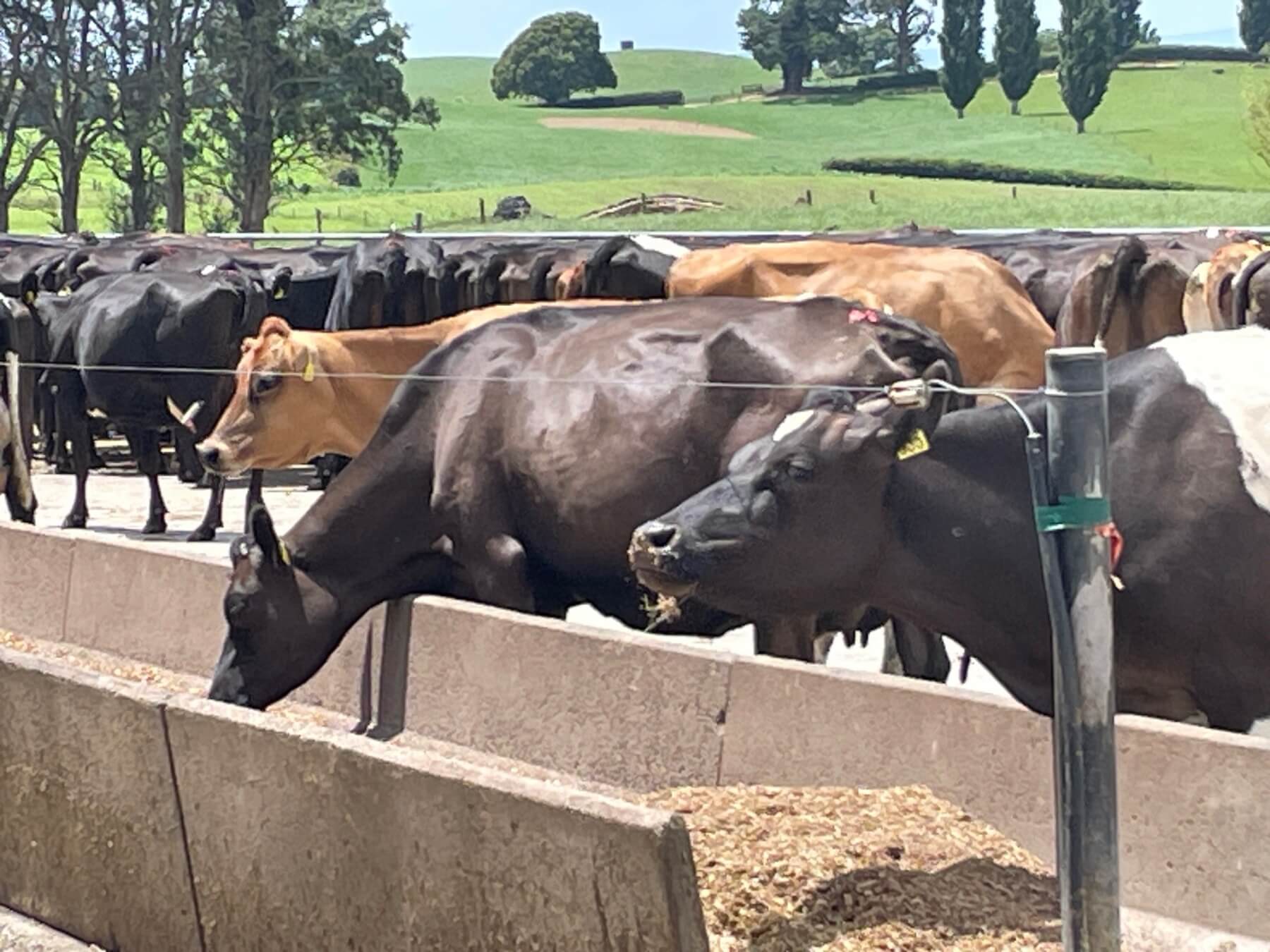
Dairy farmer Dave Swney’s herd enjoys a feed ahead of afternoon milking.
Orders come in large and small.
“They buy five plants, or 1000,” Trevelyan said of her clients.
“A big part of my role is working with farmers to improve environmental best practice.”
She said she didn’t know a farmer who was not interested in improving the environment.
In the last three seasons the pair have turned to providing their natives in biodegradable pots, meaning farmer do not have to remove and recycle plastic pots when planting, halving planting time.
Riparian planting improves water quality, reduces erosion, lowers water temperature, and increases biodiversity on farms.
“Alice and I are strategic partners,” Swney said.
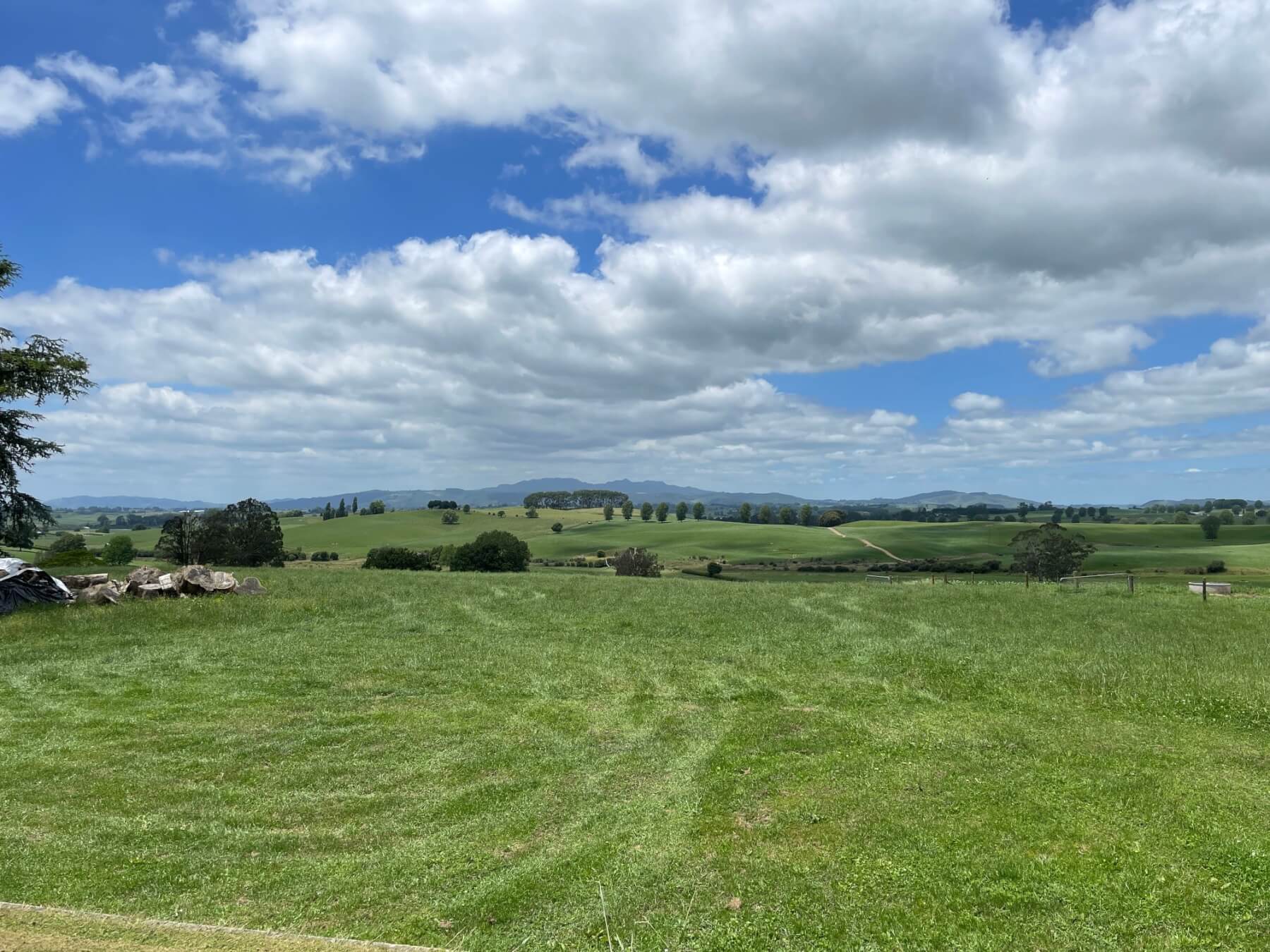
Overlooking Maungatautari
The couple welcomed Fonterra record Farmgate Milk Price forecast of $10 per kilogramme of milksolids, but as Olam Food Ingredients (OFI) suppliers will wait until the end of the year to learn how it has affected their milk price.
Fonterra raised the 2024-25 season forecast by 50c on December 5.
“Great to see payout looking stronger for the 23-24 season. It is welcome news after a couple of tough seasons,” Trevelyan said.
“With improvement in milk price and a reduction in interest rates it means we can catch up on some capital improvements, repair and maintenance and debt reduction that have been put on hold for the last couple of years.
“OFI will review our milk price based on data at the end of each month.”
OFI opened a dairy processing plant in Tokoroa last November.
“It was just right for us and our family,” Swney said.
The couple are contract milking 410 Jersey cross cows producing 190,000 kilograms of milksolids on a 124ha dairy farm between Ōtorohanga and Te Awamutu on Ōtorohanga Road. They are in an equity partnership with Swney’s parents Phill and Deb who has owned the farm for 35 years. The farm also employs second in command Jayson Jacinto and farm assistant Boota Singh.
Swney, who also sits on the national committee of Smaller Milk and Supply Herds (Smash), prefers to graze calves on the property for their first year rather than send them off farm.
He grows 10 hectares of maize and five hectares of chicory and lost some to hungry insects earlier in the season.
“We milk every cow once a day when she calves until we are happy with her eating and appetite (gut fill), typically seven to 10 days post calving,” Swney said.
“Both herds are then milked twice a day until the heat starts to ramp up around Christmas when we put the young cows on once-a-day milking for the rest of the season. The other herd continues to be milked twice a day but kept close to the cowshed.”
“We have a long skinny farm,” Trevelyan said.
“Because of that we do things a bit differently,” Swney added.
They have also installed a feed pad at the approach to the milking shed to give their herd a boost.
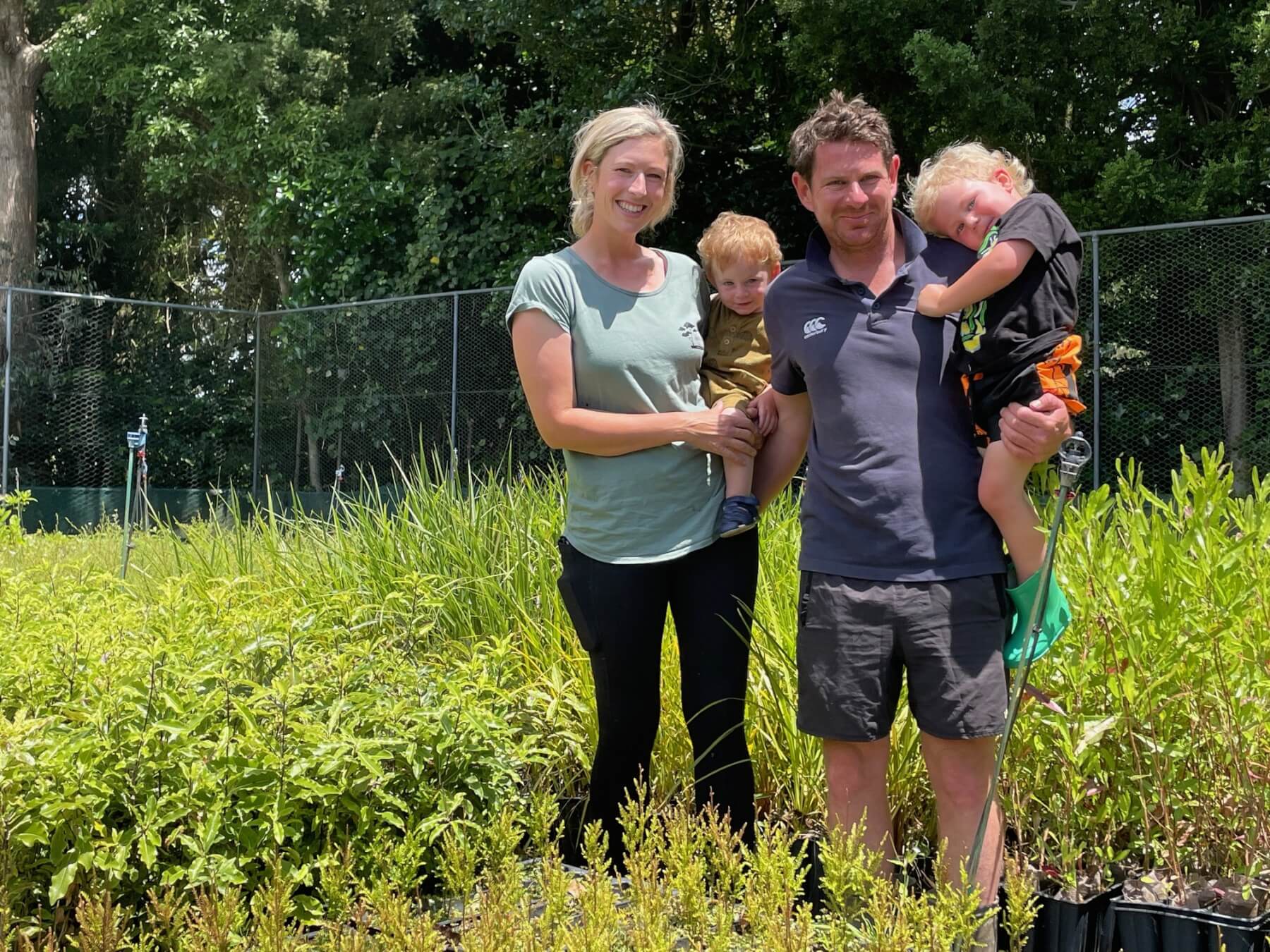
Native Dairy Farmer owners Alice Trevelyan and Dave Swney enjoy their native nursery with their boys Walter, aged two, and Rex, aged one.








